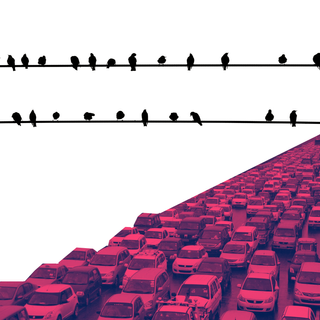NITI Aayog is proposing to construct a mega financial-tourist complex on Little Andaman Island, reports The Hindu. It would turn the island into a free trade zone and that could compete with Singapore and Hong Kong.
Conservationists say the plan threatens an already-fragile ecosystem and will lead to habitat loss for the vulnerable Onge tribe and rare wildlife.
The planned urban development would span 240 sq km. Zone 1 would be the financial district and medi-city; zone 2 would have leisure destinations, a film city, a residential district, and tourism attractions; and zone 3 would be a nature zone comprising an exclusive forest resort, nature healing district and a retreat. The proposal also includes plans for ‘underwater’ resorts, casinos, golf courses, convention centers, nature cure institutes, and an international airport capable of handling all types of aircraft. A 100 km ring road will be constructed parallel to the coastline from east to west and will be supplemented with a mass rapid transit network.
Earlier in 2020, Prime Minister Narendra Modi had declared the Andaman and Nicobar islands would be developed as a “maritime and startup hub.” He had said that 12 islands of the archipelago had been selected for high-impact projects with an emphasis on boosting trade for the region.
But experts say the plans are cause for concern from a social, ecological, and historical perspective. “The Andaman & Nicobar Islands are not fully studied for their biodiversity,” wildlife conservationist Sanjay Molur told Gaon Connection. “New findings keep emerging regularly which indicates much work requires to be done. While researchers are finding new species from these precious islands, they are also finding new alien invasive species in the composition. Alien invasive species are an indication of negative human impacts.”
Additionally, such a large diversion of forest land would cause environmental loss and damage the habitat of various species, leading to irreversible ecological destruction. “What’s bothersome are also the terms used for the proposed project—sustainable and holistic development,” added Molur. “Anything that impacts nature irreversibly is not sustainable. Anything that impacts sustainability is not holistic.”
Related on The Swaddle:
Study: Earth Is Losing Plant Species 350 Times Faster Than Historical Average
In addition, critics point out the “presence of indigenous tribes and concerns for their welfare.” Little Andaman is socio-ecologically of high importance and large parts of the island are protected: as Reserve Forest under the Indian Forest Act and as the Onga Tribal Reserve.
In order to proceed with the development, the forest land would need to be de-reserved and de-notified. And if the Onge people become an impediment, the vision suggests they “can be relocated to other parts of the island.” A meeting, held on February 4, would decide on the denotification of the Onge tribal reserve on Little Andaman.
Aside from concerns over human rights and biodiversity preservation, the plan has also been criticized for its feasibility, with experts pointing out the lack of connectivity to the Indian mainland and the region’s vulnerability to tsunamis and earthquakes.
The vision plan is not yet in the public domain.




